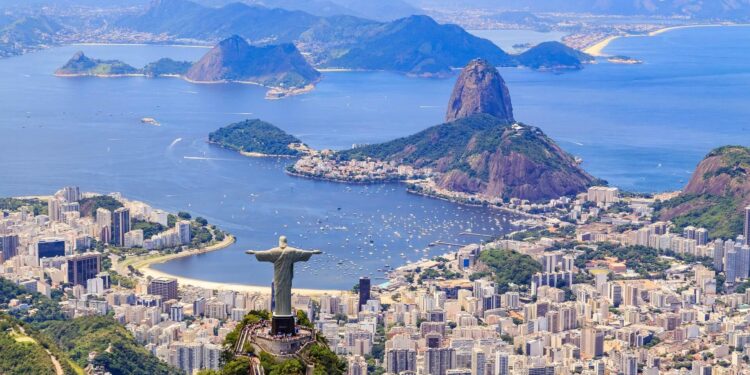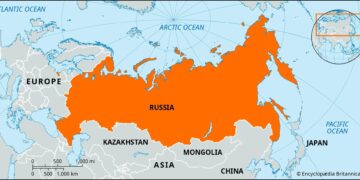Introduction: Rio de Janeiro’s Tech Renaissance and Its Impact on Favelas
Over the past decade, Rio de Janeiro has rapidly emerged as a vibrant hub for technological innovation, highlighted by the inauguration of the ‘Maravalley’ tech district in its historic port area. This ambitious project aims to attract international technology firms and stimulate economic growth. However, while Maravalley promises to inject fresh vitality into the local economy and draw global tech investments, it also raises critical questions about its effects on adjacent favelas—communities long marked by social inequality and economic hardship. As this high-tech enclave takes shape amid these neighborhoods, will it serve as a catalyst for inclusive progress or exacerbate existing disparities? This article examines how Maravalley could reshape socioeconomic dynamics in Rio’s favelas, balancing innovation with equity.
Unlocking Economic Potential for Favela Communities Through Maravalley
The creation of Maravalley offers an unprecedented chance to uplift residents from nearby favelas by integrating them into Rio’s burgeoning tech ecosystem. By fostering environments rich in innovation and entrepreneurship, this initiative seeks to empower marginalized populations through targeted programs such as vocational training, startup incubators, and technology skill workshops. These efforts aim not only to improve employability but also to nurture local business ventures that can thrive within a digital economy.
Collaborations between Maravalley stakeholders and community organizations are pivotal in bridging gaps between favela residents and global markets. Emphasizing digital inclusion ensures that individuals acquire essential competencies needed for success in technology-driven industries. The anticipated benefits include:
- Expanded Job Prospects: Direct pathways into IT roles.
- Entrepreneurial Growth: Support systems enabling favela-based startups.
- Sustainable Community Investment: Infrastructure improvements fueled by new capital inflows.
| Initiative | Projected Outcome |
|---|---|
| Vocational Training Programs | Easier access to skilled employment opportunities within tech sectors. |
| Mentorship & Networking Events | Broadening market reach for emerging entrepreneurs. |
| Digital Literacy Campaigns | Cultivating technological empowerment among underserved populations. |
Navigating Displacement Concerns Amidst Urban Revitalization Efforts
Despite its promise, the development of Maravalley has sparked apprehension regarding potential displacement risks faced by favela inhabitants. Historically, urban renewal projects often trigger gentrification processes where escalating property values lead landlords or investors to price out long-term residents. In Rio’s context, this dynamic threatens communities already vulnerable due to systemic inequalities.
Key elements influencing displacement risk include:
- The Gentrification Effect: Rising rents may render housing unaffordable for current occupants as affluent newcomers arrive.
- Lack of Protective Policies: Insufficient legal safeguards can leave residents exposed during rapid neighborhood transformations.
- Lack of Community Engagement: Excluding locals from planning decisions exacerbates feelings of marginalization and loss of agency.
- Town Hall Meetings: Open discussions allowing residents direct input on project developments;
- User-Centered Workshops: Co-design sessions focusing on skills training tailored specifically toward local aspirations;
- Cultural Exchange Platforms: Events celebrating favela heritage alongside technological advancement;
To mitigate these challenges effectively requires proactive policies prioritizing sustainable urban development that protects existing communities while fostering growth. Lessons drawn from cities like Medellín—where inclusive redevelopment strategies have successfully balanced modernization with social equity—can guide Rio’s approach toward equitable transformation.
Fostering Inclusive Development Through Community Engagement & Collaboration
For Maravalley’s vision to translate into shared prosperity rather than exclusionary progress, incorporating favela voices at every stage is essential. Transparent communication channels combined with participatory planning mechanisms ensure initiatives resonate authentically with community needs.
Organizing regular forums such as:
These platforms foster trust-building between developers and inhabitants while generating innovative solutions grounded in lived experience.
Moreover, strategic alliances between technology firms operating within Maravalley and grassroots organizations can amplify outreach efforts aimed at closing the digital divide—a persistent barrier limiting access among marginalized groups.
| Strategy Approach | Description |
|---|---|
| Community-Led Workshops | Facilitated sessions encouraging feedback collection directly from favela members. < / tr > |
| Partnerships With Local NGOs | Collaboration with trusted organizations embedded within communities. < / tr > |
| Digital Skills Training Programs | Courses designed specifically targeting enhancement of technical competencies across age groups. < / tr /> |
| Prioritized Employment Initiatives | Hiring policies favoring candidates originating from surrounding neighborhoods.& nbsp ; < / tr /> |
The Path Forward: Ensuring Equitable Growth Within Maravalley’s Expansion</ strong>
In summary,& nbsp ;the rise of ‘Maravalley’ marks a pivotal moment transforming Rio de Janeiro’s Historic Port district economically yet simultaneously posing complex social challenges related primarily to inequality mitigation.
While city leaders champion prospects tied closely with job creation plus foreign investment influxes,& nbsp ;it remains imperative that policy frameworks actively safeguard against displacing vulnerable populations.
Success hinges upon collaborative governance models involving government bodies,& nbsp ;tech enterprises,& nbsp ;and most importantly,& nbsp ;favela communities themselves working hand-in-hand towards shared prosperity.
Rio’s layered history demands nothing less than an inclusive future where cutting-edge innovation harmonizes seamlessly alongside cultural richness found throughout its diverse neighborhoods.















